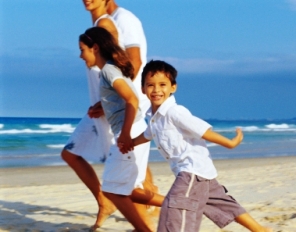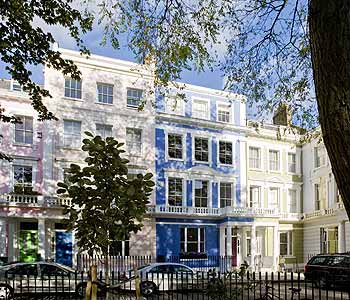Property investors update - with Coronavirus second wave
09-27-2020
PropertyInvesting.net team
Second Wave: As everyone feared a second wave of COVID-19 has started in most of Europe. A few key learnings about COVID that have become more evident in the last few months. You are far more likely to contract COVID-19 if you:
· Live in a multi-generation family home, particularly if this is in cramped living conditions
· Work in the service sector that has direct interfaces with the general public or work in very close proximity to other people (e.g. meat packing factories)
· If you work indoors
· If you mix with different types of people indoors
· If you dont wear a face mask
· If you dont wear glasses (it is thought the virus might enter via the moisture in the eyes and by wearing glasses you are also far less likely to rub your fingers with the virus on it, into your eyes and thence transferring into your body)
· You are young and socially mix with many other people and households either at School, College or University or socially in cafes/bars etc
· If you dont regularly wash your hands
· If you dont stay 2m away from other people at all times
· If you expose yourself to large viral loads for example standing next to someone in church who sneezes
· If you shout, sing or talk loud or are next to someone that does this also this encourages spit, and droplets of moisture in the air to travel over large distances from your mouth to other people
Environmental factors also have a large factor:
· Sun the virus dies if it is hit by direct sunlight for a few hours it does not like the sun direct ultra-violet light
· Heat the virus seems to thrive in the temperature range 3 to 15 deg C cool climates it does not like hot climates
· Humidity the virus prefers dry climates it is thought the virus can get deep into the lungs by circulating in dry climates and entering any enflamed parts of your lungs that might have been enflamed by very dry cold air, pollution or an existing cold-bronchial-coughing condition
· Wind the virus does not seems to like wind or well ventilated environments it prefers stagnant cool environments
· Ventilation the virus thrives in poorly ventilated rooms or buildings
· Pollution its likely the viral particles can attach themselves to small particulate pollution in cities and then swirl around and be ingested by the general public outside (and also inside buildings)
· Air Conditioning a low quality air conditioner that does not filter the air properly likely does more harm than good because the cool environment it creates can help the virus to survive whilst the virus can circulate and attach onto particles and dust
Overall if you are outside in a sunny warm windy clean humid environment for instance on a beach in a windy part of the Caribbean you are very unlikely to pick up a high viral load. In the UK windy sunny beaches with clean air in Cornwall are another point that is low risk. Converse to this being in a polluted urban city with no wind, cool climate, no sun, a dry climate and not showing go od hygiene whilst mixing with many different people socially puts you at a very high risk. For instance, in January in Leeds city centre at night socialising with University friends in a closely confined bar not wearing a mask and not washing your hands.
od hygiene whilst mixing with many different people socially puts you at a very high risk. For instance, in January in Leeds city centre at night socialising with University friends in a closely confined bar not wearing a mask and not washing your hands.
Those Affected: With schools opening and Universities starting back-up again it will be difficult to stop young people from mixing and spreading COVID-19 around nothing new. Young people are far less likely to be severely affected by the symptoms and many may be asymptomatic. It does seem that the elderly and more vulnerable people are being particularly careful and avoiding contact with younger people that might be carriers of the virus. This is easier to maintain in middle class and wealthy households that have larger homes or more homes where people are not living in cramped conditions and/or multi-generational households. These more wealthy elderly people are likely to be living along or with one other in a large house this reduces risks dramatically such people will have almost no contact with young people. This might be a key reason why deaths in places like Leicester, Bolton, Oldham and Bury are high from poorer multi-generational households with elderly people being more affected. And deaths are so low in places like Beaconfield, Newbury and prosperous middle class southern towns that have many elderly people living along in large houses.
Very Consistent Global Numbers: Its interesting to observe that in the last 5 months globally as the virus has attacked different countries and swirled around the world in part following the season climatic factors (ref northern and southern hemisphere summers-winters) the daily recorded infection rates have remained constant at 250,000 a day whilst the deaths have remained around 5,000 a day. That translates to a 2% death rate for every person recorded with COVID-19 not that high although still a significant risk.
Testing: When you listen to the key scientific experts on pandemic and infectious diseases and the COVID-19 global learnings just about the most important thing is to: Test, Track, Trace then Treat and Isolate. Its not rocket science its logic. But this is something that has been too long getting going in the UK we should not be proud of the Test-Track-Trace performance in the early months and most people would not rate it high even now six months later. The countries that seem to have eradicated it effectively are countries with a super trace-track-test system.
Singapore Example: wed like to pluck out Singapore as a good example because this is a very densely populated and polluted city-state (many local smelly refineries, lots of traffic and airplanes) that is an international travel hub. Its not windy. There are many cool air conditioned buildings. Most people live in fairly cramped conditions in small flats with many multi-generational families and an aging population. But they are disciplined people and have an excellent track and trace system. Just look at how they seem to have eradicated the COVID-19 virus no deaths for weeks.
Testing System: Its also worth mentioning that the degree of testing has shot up so along with more tests more people will be confirmed with the virus. But it does seem that as soon as Lockdown measures are relaxed cases start to shoot up again. However, deaths in the UK that peaked at over 1000 a day in April are now down at the 20-40 a day level very low in comparison to April. That said, there is a concern that in a few weeks time , the death rates will shoot up like they did end March time will tell. But the other likely factor is that treatment is now far better and more proactive. There is also an establish track and trace system. We understand doctors are now using Steroids in large amounts to reduce the inflammation of the lungs that is the main killer the more inflamed the lungs get, the more fluid builds up then breathing difficulties start oxygen cannot be absorbed fast enough organs start to fail and then heart attacked become common. Particularly with obese people, diabetics, elderly and people with weak hearts this lung infection and inflammation is the underlying cause of death. In some cases, the body cannot lift the chest to allow enough oxygen to enter and feed the body its like suffocating. Being slim, young, very fit with no underlying health issues and not smoking helps to prevent death if you contract COVID-19. Education is also important health education and hygiene understanding how people can get infected and doing actions to prevent it:
, the death rates will shoot up like they did end March time will tell. But the other likely factor is that treatment is now far better and more proactive. There is also an establish track and trace system. We understand doctors are now using Steroids in large amounts to reduce the inflammation of the lungs that is the main killer the more inflamed the lungs get, the more fluid builds up then breathing difficulties start oxygen cannot be absorbed fast enough organs start to fail and then heart attacked become common. Particularly with obese people, diabetics, elderly and people with weak hearts this lung infection and inflammation is the underlying cause of death. In some cases, the body cannot lift the chest to allow enough oxygen to enter and feed the body its like suffocating. Being slim, young, very fit with no underlying health issues and not smoking helps to prevent death if you contract COVID-19. Education is also important health education and hygiene understanding how people can get infected and doing actions to prevent it:
· Social distancing
· Not touching your nose · Using hand sanitizer
· Using hand sanitizer
· Washing your hands for 40 second regularly
· Using face masks when in shops and meeting people outside your family or social bubble
· Possibly wearing glasses (even better with side protectors like safety glasses)
· Avoid touching surfaces, railings and plastic-metal
· Keep your hands away from your face never shaking hands
· Avoiding with mixing with higher risk groups like small kids and young people
Housing Market
After a mini-boom from July to end August the housing market from recent accounts seems to have died away especially in London from early September onwards. This is probably because of the threat of a second Lockdown and increasing cases of COVID-19. Confidence levels are dipping again. Despite everything the overall house prices for the UK have risen 4% in the last year and have not dropped in most regions over the last six months. This is because of:
· Pent-up demand from an expanding population after years of building less homes than required
· Relief by most employed people that the Tories gained a majority 12 December with a promise of delivering Brexit after years of arguing about it with Labour and the LibDem being a thorn in the side of Brexit progress post Referendum
· Record low interest rates
· Furlough support for people affected in the jobs market by COVID-19
· Stamp duty holiday through to March 2021
Outlook Not Good: However, as we all know, these measures are likely to end soon and mass unemployment will ensue possibly to the tune of 10% from a low of 4% early 2020. Furthermore the stamp duty holiday will eventually end and the recession-depression will continue. Its hard to see house prices staying at these current high levels from April 2021 onwards when many of the effects of COVID-19 might finally start manifesting themselves in the housing market. Obviously this is depressing for home owners and property investors very tough conditions particularly the ban on convictions of rents that are not paying their rent through to September 2020 and now a 6 month notice period required even for people not paying any rent miserable for Landlords.
Lets hope at least that general inflation does not get out of hand forcing the Bank of England to raise interest rates that would really be the death of the housing market along with an end to the stamp duty holiday and all the draconian tax increases for buy to let Landlords of the years.
For anyone considering buying its difficult to say whether its a good time or not with all the moving parts. If COVD-19 death rates keep low despite casing rising meaning everyone is over-reacting and panicking you might judge its a good time to buy.
Long term for the really canny investor London flats without outside spaces are taking a real hit at this time bargains in nice central areas are to be had. These wont last forever but the bargains may get better over time. But eventually as global conditions normalise people get bored of the countryside especially in the winter months people especially young people will want to gravitate back to London. So if you are young with some money may be its time t grab yourself a nice two double bedroom flat without outside space in a very central area like Earls Court, Paddington-Bayswater or anywhere along the new Crossrail line that is due to open in the next few years.
We hope this Newsletter has given you some interesting health insights and a view on the current state of the UK housing market. If you have any queries, please do not hesitate to contact us on enquiries@propertyinvesting.net

